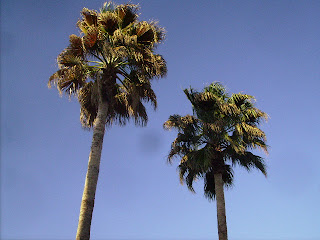
St. Elizabeth Ann Seton Church - Tucson, AZ
Early in the morning on the first day of the week, while it was still dark, Mary Magdalene came to the tomb. She saw that the stone had been moved away, so she ran off to Simon Peter and the other disciple (the one Jesus loved) and told them, "The Lord has been taken from the tomb! We don't know where they have put him!" At that, Peter and the other disciple started out on their way toward the tomb. They were running side by side, but then the other disciple outran Peter and reached the tomb first. He did not enter but bent down to peer in and saw the wrappings lying on the ground. Presently, Simon Peter came along behind him and entered the tomb. He observed the wrappings on the ground and saw the piece of cloth which had covered the head not lying with the wrappings, but rolled up in place by itself. Then the disciple who had arrived first at the tomb went in. He saw and believed. (Remember as yet they did not understand the Scripture that Jesus had to rise from the dead.) With this, the disciples went back home.

Mission in the Sun - DeGrazia Museum, Tucson, AZ
Meanwhile Mary stood weeping beside the tomb. Even as she wept, she stopped to peer inside, and there she saw two angles in dazzling robes. One was seated at the head and the other at the foot of the place where Jesus' body had lain.
"Woman," they asked her, "why are you weeping?" She answered them, "Because the Lord has been taken away, and I do not know where they have put him." She had no sooner said this than she turned around and caught sight of Jesus standing there. But she did not know him. "Woman," he asked her, "why are you weeping? Who is it you are looking for?" She supposed he was the gardener, so she said, "Sir, if you are the one who carried him off, tell me where you have laid him and I will take him away." Jesus said to her, "Mary!"She turned to him and said (in Hebrew), "Rabbouni!" (meaning "Teacher").
Jesus then said: "Do not cling to me, for I have not yet ascended to the Father. Rather, go to my brothers and tell them "I am ascending to my Father and your Father, to my God and your God!"
Mary Magdalene went to the disciples. "I have seen the Lord!" she announced. Then she reported what he had said to her.

Chapel of the Holy Cross - Sedona, AZ


 Hubs by
Hubs by



